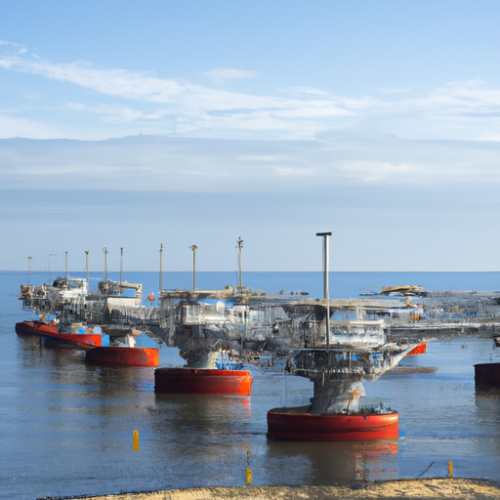Overview of the Netherlands North Sea Protection Works
The Netherlands North Sea Protection Works is an ambitious engineering project to safeguard the Netherlands from flooding. It consists of a series of large structures and dams, known as the Delta Works, built between 1950 and 1997. The purpose of the works is to reduce the risk of flooding in the Netherlands and to protect the country from the sea.
The Delta Works consist of a range of structures and dams, including the Afsluitdijk, the Maeslantkering, the Oosterscheldekering, and the Zeeland bridges. The Afsluitdijk is a 32-kilometre-long (20 mi) dam across the IJsselmeer, built to protect the provinces of Friesland and North Holland from flooding. The Maeslantkering is a pair of storm surge barriers located near the mouth of the Nieuwe Waterweg, built to protect the city of Rotterdam from flooding. The Oosterscheldekering is a 9-kilometre-long (5.6 mi) barrier located near the mouth of the Oosterschelde, built to protect the province of Zeeland from flooding. The Zeeland bridges are a network of bridges and tunnels connecting the islands of Schouwen-Duiveland and Noord-Beveland, built to reduce the risk of flooding in the province of Zeeland.
Benefits of the Netherlands North Sea Protection Works
The Netherlands North Sea Protection Works provide numerous benefits to the country. The works protect the Netherlands from flooding, reducing the risk of damage to property and lives. They also provide increased ecological, economic, and recreational opportunities.
The works reduce the risk of flooding, providing a safe environment for businesses, homes, and other activities. This reduces the risk of losses due to flooding and helps to keep the Netherlands economy strong.
The works also provide increased ecological benefits, helping to create and maintain vibrant ecosystems. The works create new habitats for plants and animals, helping to maintain biodiversity.
The works also provide increased recreational opportunities. The works create new areas for fishing, sailing, and other activities, providing people with new opportunities for leisure and recreation.
Challenges of the Netherlands North Sea Protection Works
The Netherlands North Sea Protection Works come with a number of challenges. The works are expensive to maintain and operate, requiring significant financial resources. The works can also have an impact on the environment, potentially disrupting natural habitats and ecosystems.
The works also require significant planning and coordination. The works must be designed to work together and must be regularly maintained to ensure their effectiveness. This requires significant resources and expertise, and can be a challenge to coordinate.
Finally, the works are vulnerable to the effects of climate change. Rising sea levels and increased storm activity can affect the works, potentially leading to flooding and damage. This requires regular monitoring and maintenance to ensure the effectiveness of the works.
Conclusion
The Netherlands North Sea Protection Works are an ambitious engineering project that provides numerous benefits to the country. The works provide increased protection from flooding, increased ecological benefits, and increased recreational opportunities. However, the works also come with a number of challenges, including high costs, potential environmental impacts, and vulnerability to climate change.





